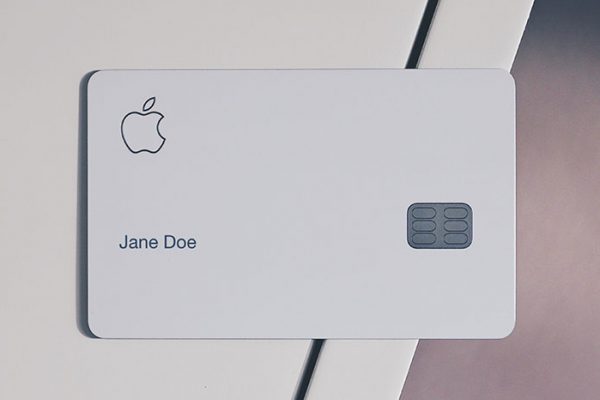We want to clarify something off the bat: boosting your brand’s image isn’t the only reason you should be optimising your brand experience (though it certainly helps). A rock-solid brand experience is also key to improving your branding team’s work.
While brand experience is more about the impression people get when they interact with your brand, actually HAVING a brand experience that is consistently effective also makes your life as a brand manager a lot easier. It teaches you what to aim for to get your brand the positive attention it deserves.
Mastering your overall brand experience strategies is easier said than done, though… unless you add the right software to the mix. Read on to find out why and how you can get started!
Suggested reading: Do you know what brand asset management involves but are unsure about actually making the jump? Our explainer Would Your Brand Assets Really Benefit From Brand Asset Management? will help!
Who needs software for their brand experience?
The short answer is anyone who wants to improve their customers’ brand experience. The long and better-explained answer is anyone who wants to optimise their branding strategies and workflows to then enable that better brand experience.
This doesn’t mean that you should necessarily start taking up every brand software tool on the market. For one, there’s no guarantee that all, or even any of them, will truly improve your branding. Taking up too many will just lead to a MarTech stack that’s out of control and causes more issues than it’s worth.
You need a holistic, multi-beneficial tool that makes managing and developing your brand assets the best they can be so that your brand experience is the best it can be in turn. That’s where brand management software comes in.
Bad brand management kills brands
Successful brand management goes hand-in-hand with successful brand experience, as they both involve two things:
- Having a good brand in the first place.
- Keeping your branding consistent.
Of course, if this was so simple, you wouldn’t need a tool like brand management software or a blog like the one you’re reading right now. There are five main things your brand management software needs to do for you to start seeing positive results with your brand experience.
Digital Asset Management (DAM)
Digital “assets” are the things that make up your brand, such as logos, fonts, and images. DAM software makes storing and locating the right asset easier by creating a single home for all your assets. Without this, your assets could be all over the place, in multiple clouds, and exist as multiple variations all at once.
Advanced DAMs will automate the creation of critical metadata, enable permission-based access to files on a user-specific level, and provide full visibility of your entire catalogue of brand material.
Approval processes and annotations
Passing new brand content up and down the chain of command and all around the Slack channels to get someone — anyone! — to sign off on it slows everyone down and is a recipe for a lack of brand consistency.
Solid brand management software allows users to create new content, add notes, notify other users of changes, and give managers a bird’s eye view of production. Getting approval for work quickly keeps your brand up to date and reduces delays in the creative process.
👉 Consistent brands lead to better experiences. Check out The Brand Consistency Toolkit for an in-depth guide to consistency 👈
Digital & Print templates
Larger organisations might have dozens of different creative brand actions daily. Sales proposals need tailored brand content, the latest TikTok trend needs a logo with specific colours, and the next regional email marketing campaign includes a custom banner. Tracking all these different requests could be its own full-time job.
Instead, brand management software can include pre-approved and customisable templates. End users can grab the template they need, tweak it — within boundaries — for their application, and get on with their work. This is especially helpful for people with little or no design skills who need to make low-level artwork changes. Plus, it gives your creative teams with design skills the space to do more meaningful work.
Brand guidelines
A simple way to improve your brand’s consistency is to repeatedly show everyone your brand guidelines until they can recite them in their sleep. Of course, that’s probably not ethical and is a process you would have to repeat every time something changes.
The next best solution is to use brand management software to link your brand guidelines to the creative process where they are needed. A single source of brand guideline truth that gets pushed out to the DAM tools as it’s needed keeps the same brand vision in front of everyone when they are working on branded content.
Logo finding support
How many versions of a logo does one company need? The answer could be hundreds. You may need a landscape version, a portrait version, a version with a solid colour background, and the list goes on. That’s all before you can even consider sub-brands and file types.
Brand management software platforms such as Brandworkz give users a “logo decision tree” to go through their options and find the best choice for their application. Connecting this to brand guidelines is another step towards consistent results.
Now that you know what brand management software is and does, let’s get back to brand experience.
Suggested reading: Software can help you with much more than just your brand experience — check out our blog, 6 Problems Solved by Digital Brand Management Tools, to find out more!
Brand experience software enables consistent management
What do you expect when you walk into a McDonald’s or roll up at the drive-thru? You expect fast food. That’s the McDonald’s brand, and it covers so much more than just the golden arches.
In the simple interaction of going to a drive-thru, customers see the brand’s visual identity (signs and logos), experience the brand’s personnel (employees), test the brand’s products (food), and judge the brand’s values (speed and quality of food.)
We could push the metaphor further, but you probably get the point.
Brand experience is much broader than just managing logos and font sizes. Brand experience software should be a listening tool that collects valuable data about how customers are FEELING about your brand. Then, it should also report this data in a way that gives clear choices about how to foster a better relationship with your customers.
- 87% of customers think brands should work harder at delivering a consistent experience.
- Consistent brand presentation increases that brand’s revenue by an average of 23%.¹
So marrying a combination of effective brand experience and brand management software could increase your revenue by 23%. The 87% of customers — that’s most of them, by the way — who think your brand should be working harder to deliver a consistent experience will thank you.
And it’s consistency that you need to get your brand experience at the top of its game in the first place. Actually, consistency as a whole is what brands need to start building up success for the here-and-now AND long-term future.
That’s why we at Brandworkz developed our brand management software: to help brands see brand consistency, smoother workflows, and branding success using our BMS capabilities. Our software offers features such as DAM, integrations, approvals, and workflow processes to give you full control over your brand consistency (and experience) from the get-go. Just book a free demo to see how Brandworkz can work with your brand today.





